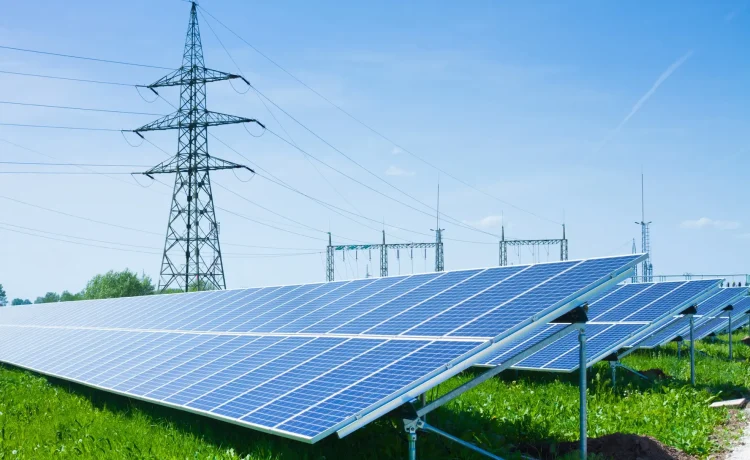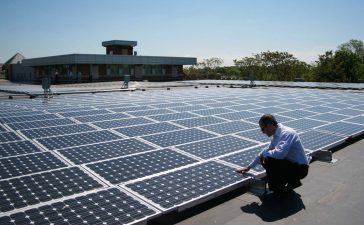Energy is the backbone of every modern economy. From powering homes and offices to fueling industries and transportation, energy drives business growth and societal development. But as global demand continues to rise and environmental concerns grow, the business world is facing a critical challenge: how to balance economic growth with sustainable energy practices.
In recent years, the energy sector has undergone a dramatic transformation. Renewable sources, new technologies, and innovative business models are reshaping the way companies produce, consume, and manage power. For businesses, understanding these trends isn’t just about staying competitive—it’s about ensuring long-term survival in a rapidly evolving marketplace.
Why Energy Matters More Than Ever for Businesses
Energy costs and availability directly affect profitability, operations, and strategic growth. For manufacturers, energy can account for a significant portion of production costs. For tech companies, the need to power data centers efficiently is critical. Even small businesses feel the impact of rising utility bills and the growing pressure to adopt eco-friendly practices.
Beyond operational concerns, energy choices now influence brand reputation. Consumers and investors increasingly favor companies that commit to sustainability. Businesses that adopt renewable energy or reduce their carbon footprint often gain a competitive edge, attracting eco-conscious customers and meeting stricter regulatory requirements.

In short, energy isn’t just a utility expense anymore—it’s a core component of corporate strategy.
The Shift Toward Renewable Energy
One of the biggest shifts in the energy landscape is the rapid growth of renewable energy sources such as solar, wind, and hydropower. Businesses around the world are investing in these alternatives for several reasons:
-
Cost Savings Over Time
While the upfront investment in solar panels or wind projects can be high, renewable energy systems can dramatically reduce long-term operating costs. Falling technology prices and government incentives make these solutions more accessible than ever. -
Regulatory and Policy Support
Governments are introducing tax breaks, grants, and clean energy mandates that reward businesses for adopting sustainable practices. In some regions, failing to transition to cleaner energy can mean facing penalties or higher operating costs. -
Meeting Consumer Expectations
Today’s consumers are more environmentally aware and prefer brands that demonstrate responsibility. Renewable energy adoption helps businesses strengthen their reputation and attract loyal customers. -
Energy Independence
By generating their own power, businesses can reduce reliance on volatile energy markets and shield themselves from fluctuating fuel prices.
Innovations Driving the Business-Energy Relationship
Technological advancements are making it easier for businesses to optimize energy use and embrace cleaner power. Some of the most influential innovations include:
1. Smart Grids and IoT Integration
Smart grids, combined with the Internet of Things (IoT), allow companies to monitor and control energy usage in real time. Sensors and connected devices can identify inefficiencies, adjust energy consumption automatically, and reduce waste.
2. Energy Storage Solutions
Battery technology, particularly large-scale lithium-ion systems, is revolutionizing how businesses manage power. Storage allows companies to store excess renewable energy and use it during peak demand, reducing costs and reliance on fossil fuels.
3. Artificial Intelligence (AI) in Energy Management
AI-driven analytics help businesses predict energy demand, optimize production schedules, and reduce unnecessary consumption. For energy producers, AI improves grid stability and forecasting for renewables.
4. Microgrids for Localized Power
Microgrids—self-contained energy systems that can operate independently or alongside the main grid—are becoming popular among businesses, especially in remote or energy-unstable regions. They enhance energy security and resilience.
The Role of Energy in Corporate Sustainability Goals
Many companies now include energy strategy as part of their broader Environmental, Social, and Governance (ESG) commitments. Investors and regulators are paying closer attention to how companies manage energy and emissions.
Businesses that set ambitious sustainability targets—like achieving net-zero carbon emissions—often focus on energy efficiency, renewable adoption, and carbon offset programs. These initiatives not only meet regulatory demands but also strengthen relationships with stakeholders and improve long-term profitability.
Energy Challenges Businesses Must Navigate
While the future of business and energy looks promising, there are challenges that companies must address:
-
Upfront Costs – Installing renewable systems or upgrading infrastructure can be expensive, especially for small and mid-sized businesses.
-
Infrastructure Limitations – Not all regions have reliable grids or access to renewable sources, which can slow the transition.
-
Policy Uncertainty – Regulatory frameworks vary across regions and can change quickly, making long-term planning difficult.
-
Skill Gaps – Managing new energy technologies requires skilled workers, which some businesses struggle to find.
To overcome these obstacles, many companies partner with energy consultants, seek government grants, or form cooperatives to share costs and expertise.
How Businesses Can Take Action Today

Transitioning to a more sustainable and efficient energy strategy doesn’t have to be overwhelming. Here are practical steps businesses can take:
-
Conduct an Energy Audit
Identify where energy is being wasted and where efficiencies can be improved. Simple changes—like upgrading lighting, optimizing heating and cooling, or installing smart meters—can yield significant savings. -
Invest in Renewable Options
Even small-scale installations, like rooftop solar panels, can cut costs and reduce reliance on non-renewable power sources. -
Embrace Energy-Efficient Technology
Switching to energy-efficient appliances, machinery, and building systems can lower consumption and operational expenses. -
Explore Power Purchase Agreements (PPAs)
Businesses that can’t install their own renewable systems can still purchase clean energy through long-term contracts, often at favorable rates. -
Educate and Involve Employees
Encourage employees to adopt energy-saving behaviors, from turning off unused equipment to supporting sustainability initiatives.
The Future of Energy and Business: A Partnership for Growth
As the world pushes toward a cleaner, smarter energy future, businesses that embrace innovation will lead the way. The energy sector isn’t just a backdrop for commerce anymore—it’s becoming a space where companies can innovate, differentiate themselves, and gain a competitive edge.
The companies that succeed will be those that:
-
Adopt sustainable practices early.
-
Leverage technology to optimize energy use.
-
Stay agile in the face of changing regulations and consumer expectations.
By doing so, they won’t just reduce costs—they’ll strengthen their brands, improve resilience, and contribute to a more sustainable future for everyone.
Final Thoughts
Energy is no longer just a line item on a budget—it’s a driver of growth, innovation, and reputation in the business world. As technology evolves and society demands cleaner, more efficient solutions, companies must adapt to remain competitive.
By embracing renewable energy, investing in innovation, and making sustainability a core part of their operations, businesses can do more than survive—they can thrive in a future where energy and growth go hand in hand.
Now is the time for companies, big and small, to view energy not as a cost to manage, but as a strategic opportunity to power progress.





